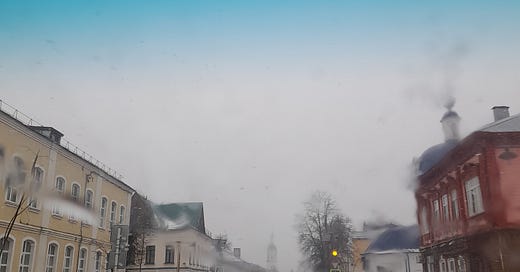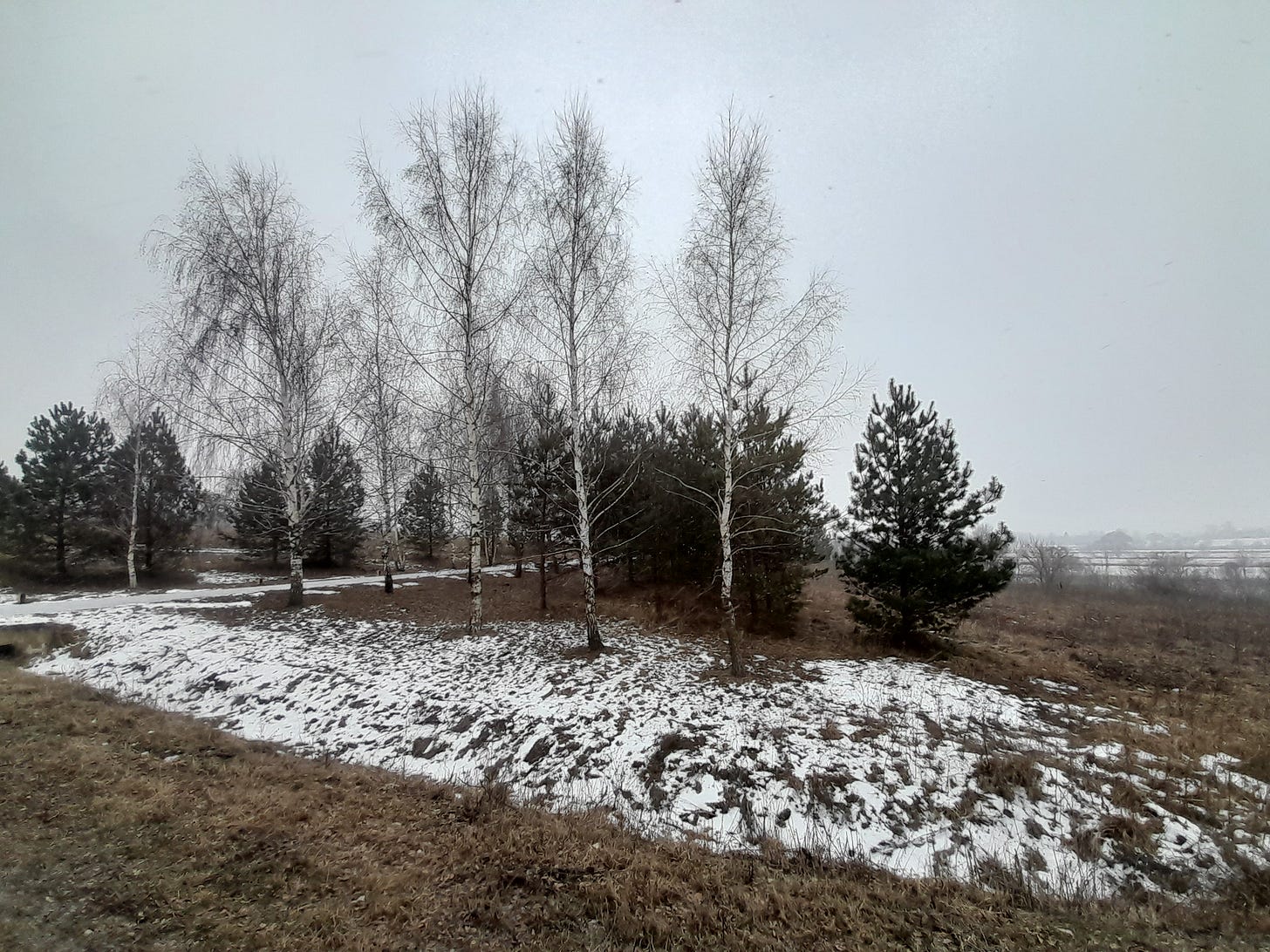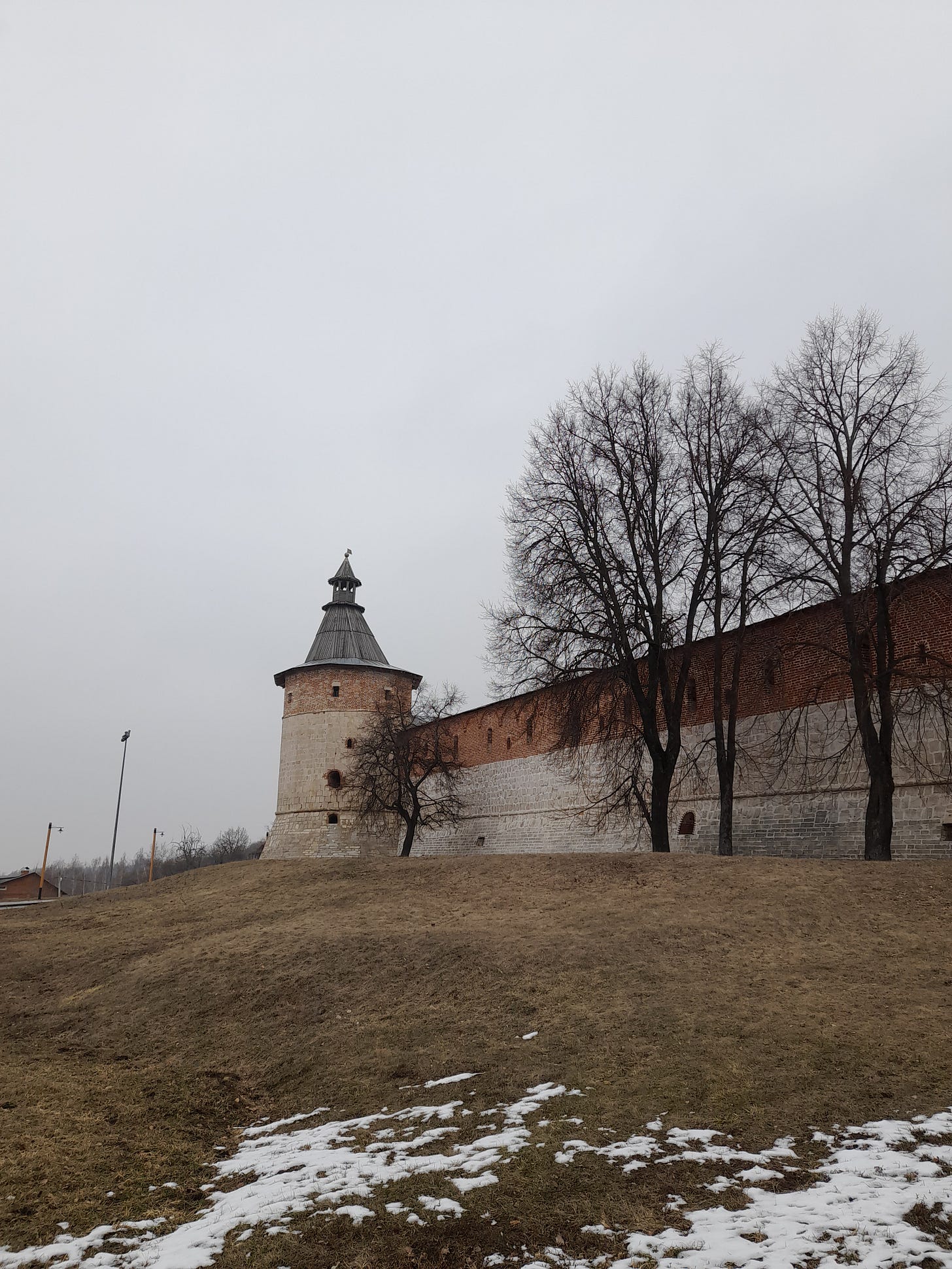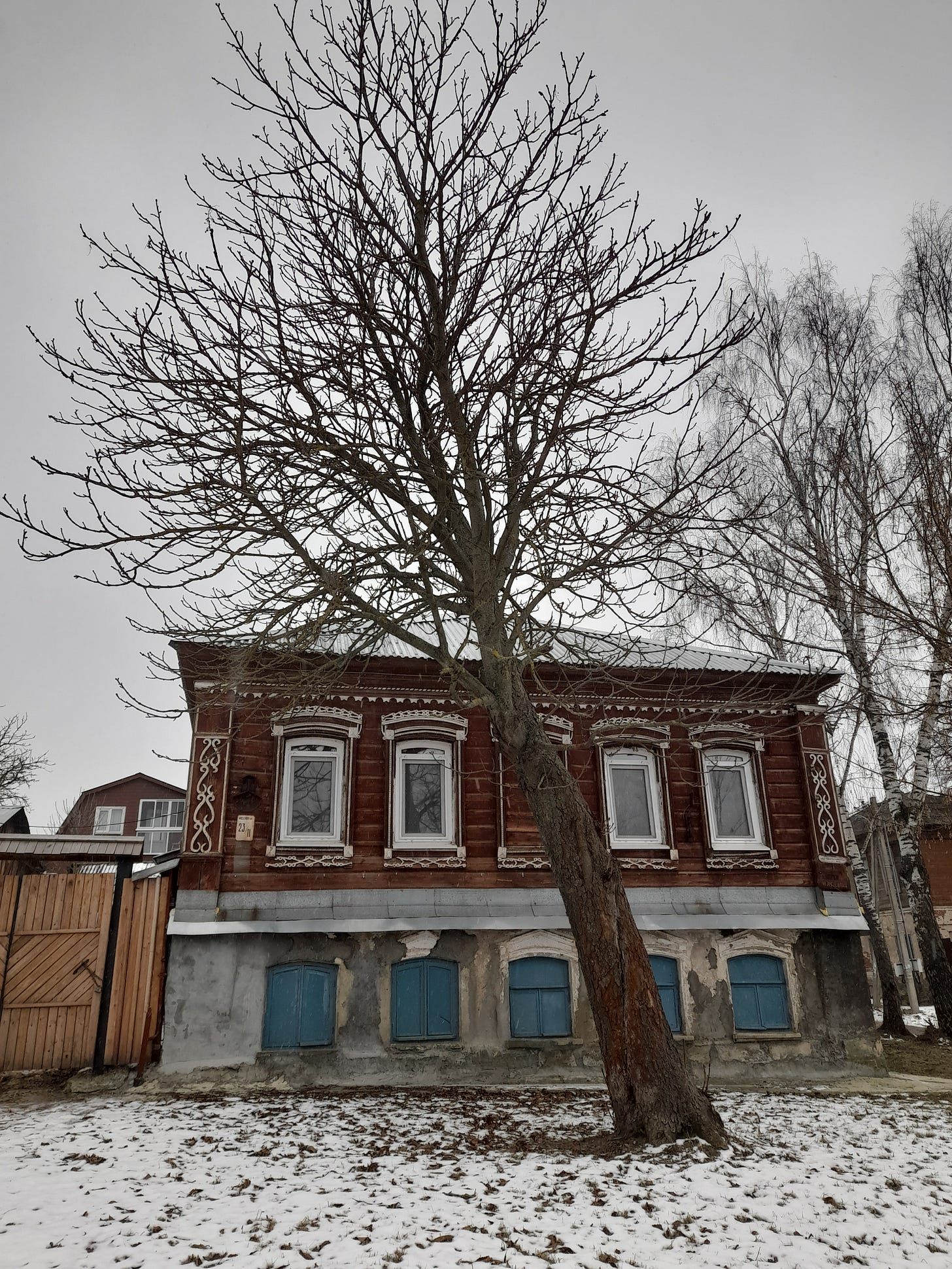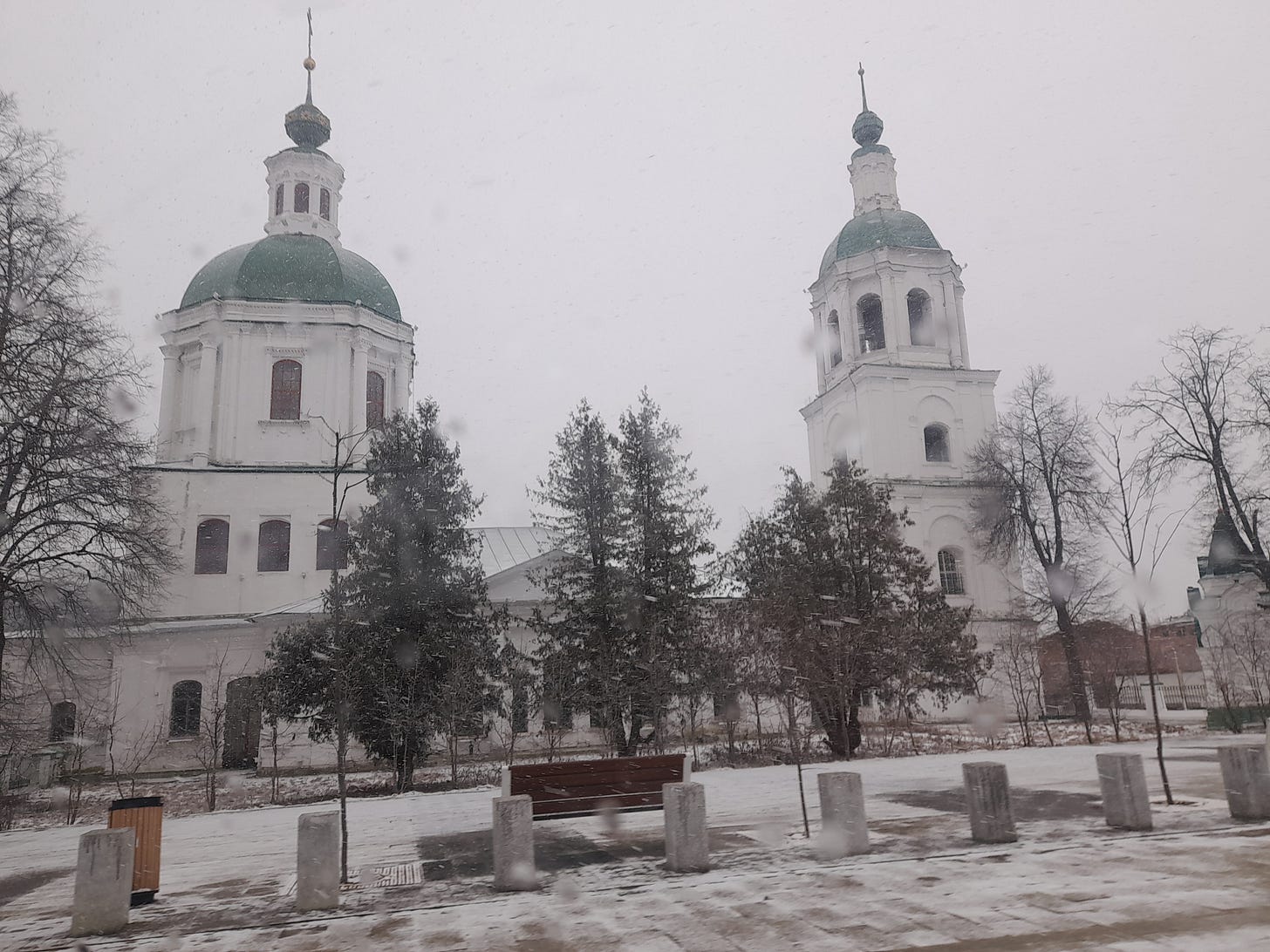Moscow Diaries: Road Tripping to Zaraysk
A day-trip to a historic town that dates back to the 12th century gave me a tiny glimpse of life outside the capital on a late-winter day.
After an unusual stretch of nine days of blue skies and sunshine in the late-winter, I woke up to the grey that Moscow is infamous for at this time of year. It had snowed the night before but warmer temperatures in the early morning led to a bit of slush. It was one of those mornings where I would have happily gone back to bed until 9 am, but then I had promised G to revive our tradition established 10 years ago to go on long weekend drives out of Moscow.
Powered by coffee and a cherry tart and the motivation to see my 14-year old goddaughter, now a fluent English speaker, and my 10-year old godson, I dragged myself outdoors and onwards to G’s new flat. The building in southwestern Moscow was once home to members of the Soviet intelligentsia and where the 1976 Eldar Ryazanov classic film Irony of Fate was shot.
Playing with his two dogs for a while as M (goddaughter) and A (godson) got ready, I also checked his collection of Ganeshas and Buddhas! «Gifts for future visits- sorted,» I thought to myself.
We drove towards the vast Moscow Region and out of the capital’s city limits, connecting to the M2, a highway that links Moscow to Crimea via the Kerch Bridge. There used to be a time when people said Russia’s two main drawbacks were the two ‘D’s - Duraki (Idiots) and Dorogi (Roads). There’s little doubt that over the last decade or so, the second D feels like much less of a problem.
This toll road is in excellent condition throughout the year and I honestly felt happy to cruise on it watching the wide open spaces of this great landmass called Russia. The more we moved away from Moscow, the colder it got and then came the snowfall. I might have been a bit disappointed if I had left Russia on a February-March trip without seeing just a bit of snow. The weather gods obliged.
What is it about those onion-domed churches that pop up every once in a while on a long Russian drive that gives me a sense of joy? Perhaps, it’s what they stand for when it comes to Russian history. My mind takes me back to the Russia of the 19th century, after Alexander II emancipated the serfs!
An integral part of our drives is the fairness in music lists that get played in the SUV. As a teenager M has a liking for pop, A loves the story of Robin Hood in Russian so much that all of us can dictate it almost word for word.
Besides this white snow-powdered fields of the Russian plains, there are the frozen rivers which also make for a lovely sight. On this March morning, the ice was melting and the fishermen could not walk on the frozen surface and try their luck!
The snow went away and by the time we were in Zaraysk, we were rewarded with some nice sunlight. The town has a recorded history dating back to the 12th century and houses one of the smallest kremlins (fortresses) in Russia.
The Zaraysk Kremlin has a fine museum with both great pieces of 19th century art, as well as geological exhibits from pre-historic times.
I admired the small brick and limestone kremlin in the winter sun and caught a glimpse of the Orthodox chapel. This wasn’t a moment to admire the architecture and think of how this fortress was a bulwark against Tatars and Poles in the 16th century. The active and energetic children wanted to walk to the riverfront. The path from the fortress to the river is lined with traditional Russian cottages, some of which are maintained to perfection, while others are condemned.
These walls have seen many stories over the ages from the time of the Grand Duchy of Moscow to the Romanov Dynasty, the Soviet Union and Putin’s Russia. As I stood by the calm river, I almost felt like I was inside a Andrey Tarkovsky film. Something about the timelessness of these surroundings made my mind drift further.
The next stop was the kupel (baptistery) where it’s a tradition to a take a dip in icy cold waters. As someone who has taken dips in the Sea of Okhotsk in mid-winter by drilling a hole through the frozen top layer, this did not seem like an intimidating prospect.
As we drove into the main town of 26,000-odd residents I noticed how it had gotten a facelift, with old buildings and churches being restored. With so much of Europe being closed off to Russians, there has been a domestic tourism boom in the country and small towns are once again seen as attractive places to live in.
This town reminded me so much of Kashin, in the Tver Region. I am honestly happy to see these kinds of small towns springing back to life. Moscow and such big cities are not for everyone and there’s no reason why people should be forced to go there for lack of opportunities elsewhere.
On our way back to Moscow, I took note of the names of the towns and settlements. Just a week after our drive, some of these places were attacked by Ukrainian drones- Just a reminder of the times we live in!
